How Can Art be Created From Waste?
Art has always been a reflection of society, and in recent years, it has taken on a new role: that of a beacon for environmental awareness. The question arises, how can art be created from waste? The answer lies in the innovative minds of artists who see potential where others see trash. These creative individuals are transforming discarded materials into stunning works of art, breathing new life into what would otherwise end up in landfills. This process, known as **upcycling**, not only showcases artistic talent but also serves a greater purpose—promoting sustainability and environmental responsibility.
Imagine walking through a gallery where the sculptures are made from old plastic bottles, and the paintings are crafted from scraps of fabric. This is not just a trend; it's a movement that encourages us to rethink our relationship with waste. Artists are not just creating visually appealing pieces; they are telling stories about consumption, waste, and the importance of caring for our planet. By utilizing materials that would typically be discarded, they challenge the norms of traditional art and provoke thought about our consumer culture.
In this article, we will explore the various ways artists are incorporating waste into their creative processes. We will delve into the materials commonly used in waste art, such as plastic, metal, paper, and textiles, and discuss the innovative techniques that bring these materials to life. Additionally, we will highlight community art projects and educational programs that promote the idea of waste art, showing how these initiatives can lead to meaningful change in local environments.
As we journey through the fascinating world of waste art, one thing becomes clear: the potential for creativity is limitless when we embrace the idea of upcycling. Not only does it allow artists to express themselves in unique ways, but it also inspires us all to reconsider our consumption habits and the impact we have on our planet. So, let's dive into the vibrant realm of waste art and discover how these remarkable transformations are reshaping our views on art and sustainability.
Upcycling plays a crucial role in reducing waste and promoting sustainability. By creatively repurposing materials, artists contribute to environmental conservation while inspiring others to rethink their consumption habits and waste management.
Artists utilize a variety of waste materials, including plastic, metal, paper, and textiles. Understanding these materials' properties helps artists create unique pieces that challenge perceptions and provoke thought about consumer culture.
Plastic waste is a prevalent material in contemporary art. Artists use discarded plastic to create sculptures, installations, and mixed media works that address pollution and environmental issues, raising awareness about the plastic crisis.
Techniques such as melting, weaving, and molding allow artists to manipulate plastic waste creatively. These methods not only enhance the aesthetic value of the artwork but also highlight the versatility of seemingly useless materials.
Several renowned artists have gained recognition for their work with plastic waste, such as Chris Jordan and Aurora Robson. Their impactful pieces serve as powerful statements on environmental degradation and the importance of recycling.
Textiles are another popular medium for waste art. Artists transform old clothing and fabric scraps into intricate designs, showcasing the potential of textile waste while promoting sustainable fashion practices and reducing landfill contributions.
Community art projects focused on waste materials foster collaboration and environmental awareness. These initiatives encourage local participation, enabling individuals to contribute creatively while addressing waste issues and promoting sustainability within their communities.
Educational programs that incorporate waste art teach participants about sustainability and creativity. By engaging in hands-on activities, individuals learn the value of recycling and the artistic potential of materials often considered garbage.
Community-based waste art projects can significantly impact local environments. They not only beautify public spaces but also instill a sense of pride and responsibility among residents regarding waste management and environmental stewardship.
- What is waste art? Waste art is the practice of creating art from discarded materials, emphasizing sustainability and environmental awareness.
- How can I get involved in waste art? You can start by collecting waste materials and experimenting with them in your own art projects, or by joining local community art initiatives.
- What are some common materials used in waste art? Common materials include plastic, metal, paper, and textiles, all of which can be creatively repurposed into art.
- Why is upcycling important? Upcycling reduces waste, promotes sustainability, and encourages individuals to rethink their consumption habits.

The Importance of Upcycling
Upcycling is not just a trendy buzzword; it’s a crucial movement that has the power to reshape our relationship with waste. Imagine walking through a landfill and seeing not just trash, but potential masterpieces waiting to be born. By creatively repurposing materials that would otherwise end up in a dump, artists and everyday individuals alike contribute to a larger narrative of sustainability and environmental conservation. In a world where consumption often overshadows responsibility, upcycling serves as a beacon of hope, encouraging us to rethink our habits and the impact we have on our planet.
One of the most compelling aspects of upcycling is its ability to reduce waste. According to the Environmental Protection Agency (EPA), millions of tons of waste are generated each year, and a significant portion of this is recyclable or reusable. By transforming discarded items into art, we not only keep these materials out of landfills but also challenge the notion of what waste truly is. This process of transformation can inspire others to look at their own waste differently, prompting a cultural shift towards more sustainable practices.
Moreover, upcycling has a profound educational component. By engaging with waste materials, artists and community members can learn about the lifecycle of products, the importance of recycling, and the environmental costs of consumerism. Through workshops and community projects, participants gain hands-on experience that fosters a deeper understanding of sustainability. This knowledge is vital in empowering individuals to make informed choices about their consumption habits. In essence, upcycling becomes a vehicle for education, creativity, and environmental stewardship.
Here are a few key benefits of upcycling:
- Environmental Conservation: Reduces the amount of waste sent to landfills and conserves natural resources.
- Creative Expression: Provides artists with a unique medium to express their ideas and messages.
- Community Engagement: Encourages collaboration and fosters a sense of community through shared projects.
- Economic Benefits: Can lead to the creation of new businesses focused on sustainable practices.
In conclusion, upcycling is more than just a creative outlet; it’s a vital practice that promotes sustainability, educates communities, and transforms how we view waste. As we continue to grapple with environmental issues, the importance of upcycling will only grow, pushing us towards a more responsible and innovative future.
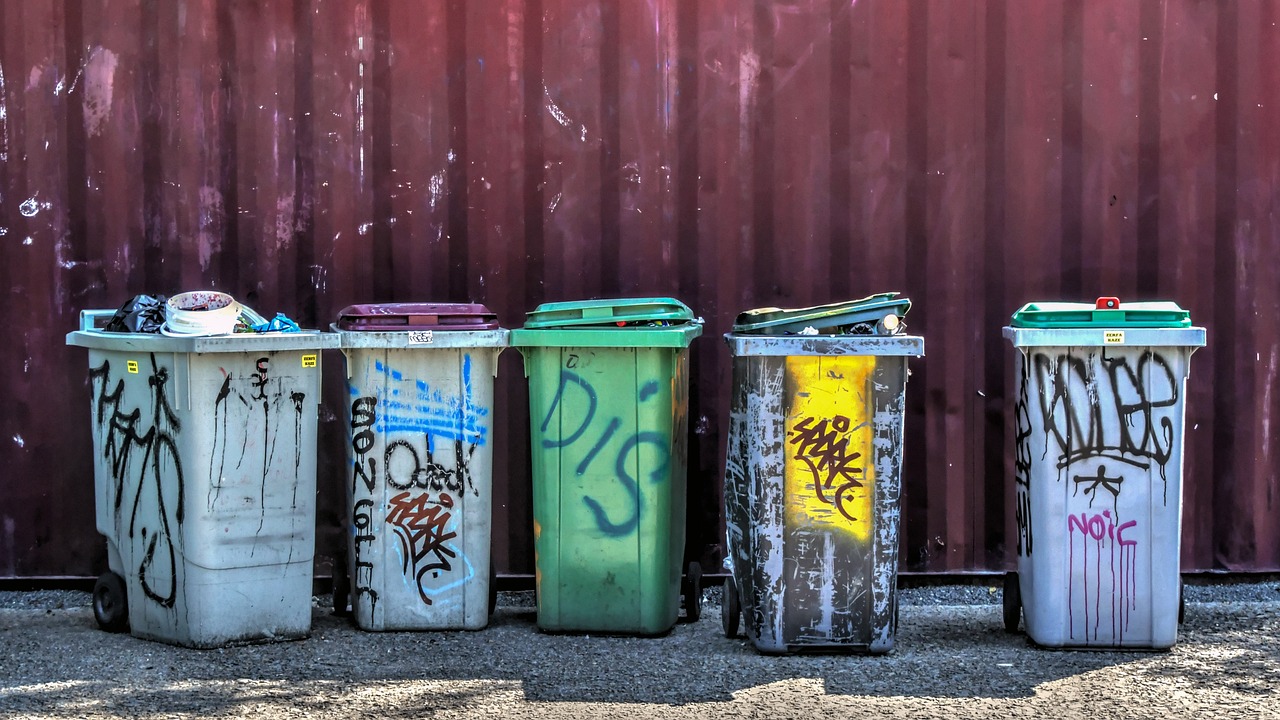
Materials Commonly Used in Waste Art
When it comes to waste art, the materials artists choose can vary widely, reflecting both their creativity and the messages they wish to convey. Artists are known to transform everyday discarded items into stunning pieces of art, challenging our perceptions of waste and the environment. Common materials include plastic, metal, paper, and textiles. Each of these materials has unique properties that lend themselves well to artistic expression.
Plastic is perhaps the most notorious waste material in today’s art scene. With millions of tons ending up in landfills and oceans, artists have turned to plastic to create thought-provoking works that address the pressing issue of pollution. From intricate sculptures made of bottle caps to large-scale installations crafted from plastic bags, the possibilities are endless. Artists often manipulate plastic in various forms, such as melting it down or weaving it together, showcasing its versatility.
Metal is another favorite among waste artists. Old cans, scrap metal, and discarded machinery can be transformed into striking sculptures that not only captivate viewers but also tell a story of industrial waste. The durability of metal allows for both indoor and outdoor installations, making it a popular choice for public art projects.
Then there’s paper, which is often overlooked. Artists use everything from newspapers to cardboard to create collages, sculptures, and even intricate origami. The beauty of paper lies in its ability to be reshaped and reimagined, allowing artists to explore themes of fragility and impermanence. In fact, many artists have taken the challenge of using recycled paper to raise awareness about deforestation and waste management.
Lastly, textiles play a significant role in waste art, particularly in the realm of fashion. Artists and designers upcycle old clothing and fabric scraps into stunning garments or textile art pieces. This not only promotes sustainable fashion practices but also brings attention to the fast fashion crisis that contributes to massive textile waste. For instance, artists may create quilt-like installations from old garments, weaving stories of identity and culture into their work.
In summary, the materials used in waste art are as diverse as the artists themselves. By creatively repurposing these items, artists not only produce visually striking works but also provoke critical conversations about consumer culture and environmental responsibility. The next time you see an artwork made from what you might consider trash, remember that it’s a powerful statement about our relationship with waste.
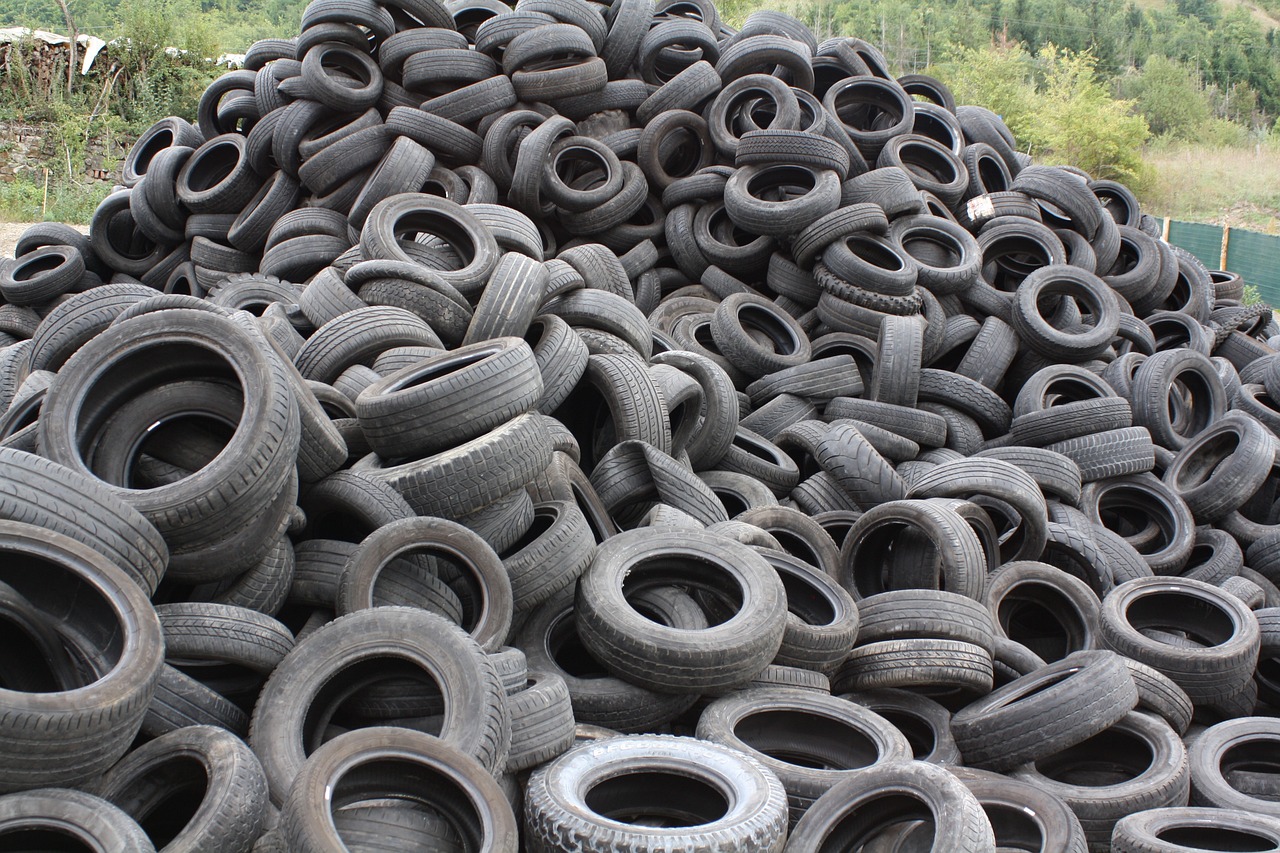
Plastic Waste in Art
Plastic waste has become a ubiquitous presence in our modern world, and it’s no surprise that artists have begun to harness this material to create thought-provoking works of art. As we continue to grapple with the consequences of our consumer-driven society, artists are stepping up to transform discarded plastics into powerful statements about pollution and environmental degradation. By using plastic waste, these artists not only highlight the crisis at hand but also showcase the incredible potential of materials that are often overlooked or dismissed as mere trash.
One of the most remarkable aspects of using plastic in art is the way it challenges our perceptions. When we encounter a sculpture or installation made from plastic bottles, bags, or other waste, it forces us to confront our relationship with these materials. We might ask ourselves, "How did this end up here?" or "What can I do to reduce my own plastic consumption?" These questions are essential as they encourage us to reflect on our habits and consider the broader implications of our choices.
Artists employ a range of innovative techniques to manipulate plastic waste creatively. For instance, some may choose to melt and reshape plastic items, creating stunning sculptures that defy their original form. Others might weave together discarded plastic bags to produce intricate tapestries that tell a story of consumerism and waste. The versatility of plastic allows for endless possibilities, and artists are continually pushing the boundaries of what can be achieved.
To illustrate the impact of plastic waste in art, consider the following table that showcases some common plastic items used by artists:
| Plastic Item | Artistic Use | Environmental Message |
|---|---|---|
| Plastic Bottles | Sculptures, Installations | Highlighting the pollution of oceans |
| Plastic Bags | Tapestries, Weavings | Promoting reusable alternatives |
| Plastic Containers | Mixed Media Art | Encouraging recycling practices |
Renowned artists like Chris Jordan and Aurora Robson have made significant contributions to the field of plastic waste art. Chris Jordan’s work often features massive installations that visually represent the staggering amounts of plastic waste generated by society. His piece "Midway: Message from the Gyre" showcases the devastating impact of plastic on wildlife, particularly seabirds, as they ingest plastic debris mistaken for food. On the other hand, Aurora Robson creates intricate sculptures from plastic waste, transforming everyday items into beautiful works of art that challenge viewers to reconsider their relationship with plastic.
Ultimately, the use of plastic waste in art serves a dual purpose: it raises awareness about environmental issues while simultaneously demonstrating the creative potential of materials that we often take for granted. By engaging with these artworks, audiences are invited to reflect on their consumption habits and consider how they can contribute to a more sustainable future. In a world where waste is often seen as a burden, artists are showing us that it can also be a source of inspiration and change.
- What is waste art? Waste art is a form of artistic expression that repurposes discarded materials, such as plastic, metal, and textiles, into creative works.
- Why is plastic waste used in art? Artists use plastic waste to raise awareness about environmental issues, challenge consumer culture, and showcase the potential of materials often deemed useless.
- How can I get involved in waste art projects? Many communities host workshops and initiatives focused on waste art. Look for local art groups or environmental organizations that offer opportunities to participate.

Innovative Techniques with Plastic
When it comes to transforming plastic waste into art, artists have developed a myriad of innovative techniques that not only breathe new life into discarded materials but also challenge our perceptions of what art can be. One of the most fascinating methods is melting, where artists heat plastic to reshape it into stunning sculptures or intricate designs. This technique allows for a unique fusion of colors and textures, creating pieces that are both visually striking and thought-provoking.
Another popular technique is weaving. Artists often take strips of plastic bags or other flexible plastic materials and weave them into baskets, wall hangings, or even clothing. This method not only showcases the versatility of plastic but also highlights the craftsmanship involved in creating something beautiful from what many consider trash. Imagine a vibrant tapestry made entirely from woven plastic; it’s a perfect example of how waste can be transformed into something meaningful.
Molding is yet another technique that artists utilize. By heating and shaping plastic into molds, they can create intricate forms that resemble traditional materials like glass or ceramics. This method opens up a world of possibilities, allowing artists to push the boundaries of creativity while making a statement about the environment. For instance, a molded piece resembling coral can serve as a poignant reminder of the impact of plastic pollution on marine life.
In addition to these techniques, artists often combine various methods to create mixed media works, incorporating elements like metal or wood alongside plastic. This not only enhances the aesthetic appeal but also encourages viewers to see the interconnectedness of different materials and the stories they tell. The result is a powerful commentary on consumer culture and the urgent need for sustainability.
Ultimately, the innovative techniques employed in plastic waste art serve a dual purpose: they elevate discarded materials into the realm of art while simultaneously raising awareness about the environmental issues we face. Each piece created is a conversation starter, prompting viewers to reconsider their relationship with plastic and the impact of their consumption habits.
- What is waste art? Waste art refers to artistic creations made from discarded materials, emphasizing sustainability and environmental awareness.
- How can I get involved in waste art projects? Many communities offer workshops or initiatives focused on waste art. Check local art centers or environmental organizations for opportunities.
- Are there any famous artists known for waste art? Yes, artists like Chris Jordan and Aurora Robson are well-known for their impactful work with plastic waste.
- What materials are commonly used in waste art? Artists often use materials like plastic, metal, paper, and textiles to create their pieces.

Famous Plastic Waste Artists
This article explores the innovative ways artists transform waste materials into art, highlighting the environmental benefits and creative processes involved in upcycling discarded items into meaningful artistic expressions.
Upcycling plays a crucial role in reducing waste and promoting sustainability. By creatively repurposing materials, artists contribute to environmental conservation while inspiring others to rethink their consumption habits and waste management.
Artists utilize a variety of waste materials, including plastic, metal, paper, and textiles. Understanding these materials' properties helps artists create unique pieces that challenge perceptions and provoke thought about consumer culture.
Plastic waste is a prevalent material in contemporary art. Artists use discarded plastic to create sculptures, installations, and mixed media works that address pollution and environmental issues, raising awareness about the plastic crisis.
Techniques such as melting, weaving, and molding allow artists to manipulate plastic waste creatively. These methods not only enhance the aesthetic value of the artwork but also highlight the versatility of seemingly useless materials.
Several renowned artists have gained recognition for their work with plastic waste, making significant contributions to the art world and environmental awareness. Among them are:
- Chris Jordan: Known for his large-scale photographic works, Jordan captures the overwhelming impact of consumerism and waste. His series "Running the Numbers" presents a visual representation of statistics related to waste, such as the number of plastic bags used every hour in the U.S.
- Aurora Robson: A pioneer in the field of plastic waste art, Robson creates stunning sculptures and installations from discarded plastic debris. Her work emphasizes the beauty that can emerge from waste, transforming everyday items into thought-provoking pieces.
- Angela Haseltine Pozzi: Founder of the non-profit organization Washed Ashore, Pozzi uses marine debris to create large-scale sculptures that raise awareness about ocean pollution. Her installations not only captivate viewers but also educate them about the detrimental effects of plastic on marine life.
These artists exemplify how creativity can merge with environmental advocacy, making their work resonate on both aesthetic and ethical levels. Through their art, they challenge us to reconsider our relationship with plastic and the impact of our consumption patterns.
Textiles are another popular medium for waste art. Artists transform old clothing and fabric scraps into intricate designs, showcasing the potential of textile waste while promoting sustainable fashion practices and reducing landfill contributions.
Community art projects focused on waste materials foster collaboration and environmental awareness. These initiatives encourage local participation, enabling individuals to contribute creatively while addressing waste issues and promoting sustainability within their communities.
Educational programs that incorporate waste art teach participants about sustainability and creativity. By engaging in hands-on activities, individuals learn the value of recycling and the artistic potential of materials often considered garbage.
Community-based waste art projects can significantly impact local environments. They not only beautify public spaces but also instill a sense of pride and responsibility among residents regarding waste management and environmental stewardship.
1. What is waste art?
Waste art is a form of artistic expression that uses discarded materials to create new works of art. This practice promotes sustainability and encourages a rethinking of waste and consumption.
2. How does waste art benefit the environment?
By repurposing materials that would otherwise contribute to landfills, waste art reduces waste and promotes recycling. It also raises awareness about environmental issues associated with consumerism.
3. Can anyone create waste art?
Absolutely! Waste art is accessible to everyone. Whether you're a professional artist or a hobbyist, you can start creating art from materials you have at home.
4. Where can I see waste art?
Many galleries and public spaces feature waste art installations. Additionally, community art projects often showcase local artists' work, providing opportunities to engage with waste art in your area.
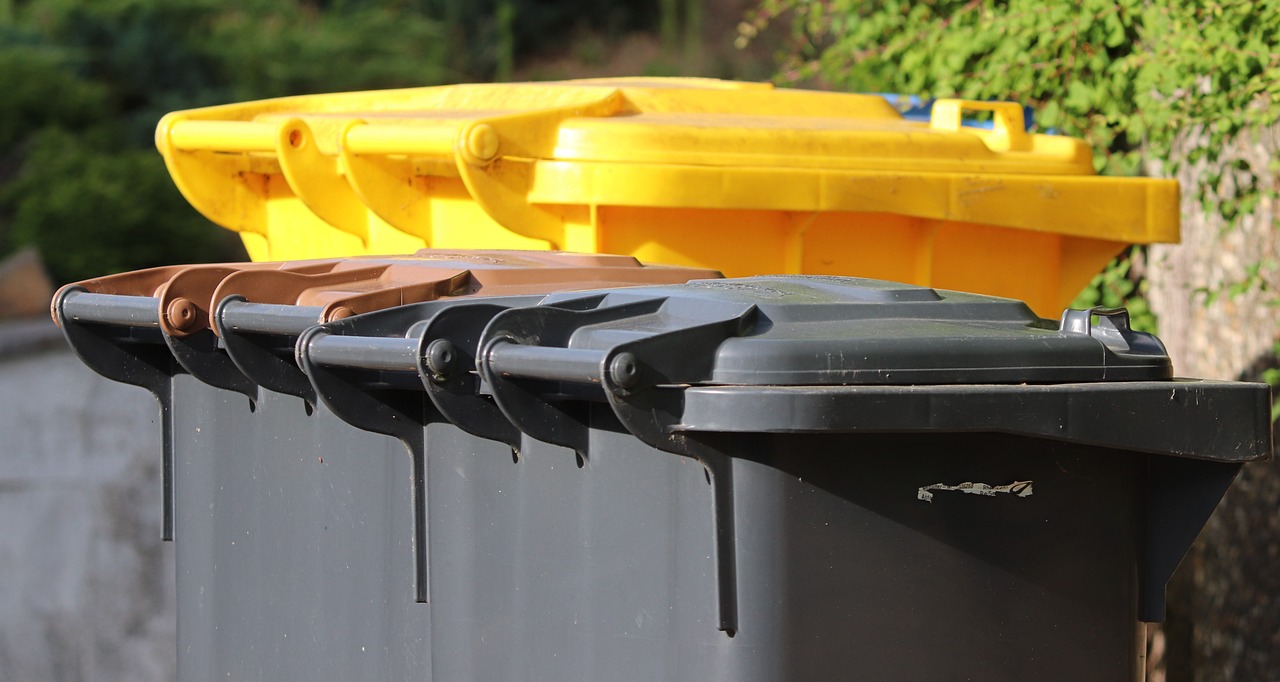
Textile Recycling in Art
Textile recycling has emerged as a vibrant and impactful medium in the world of art, where artists are transforming discarded fabrics and old clothing into stunning masterpieces. This innovative approach not only showcases the artistic potential of what many consider waste but also highlights the pressing need to rethink our consumption patterns and the environmental consequences of fast fashion. Have you ever looked at an old shirt and thought it could be a canvas for creativity? Well, many artists do just that, breathing new life into textiles that would otherwise end up in landfills.
Artists working with textiles often delve into the rich history and emotional connections associated with fabric. Each piece of clothing has a story, and when these stories are woven together in a new form, they create a powerful narrative about sustainability and identity. For instance, an old pair of jeans can be transformed into a beautiful quilt or a series of wall hangings, each patch representing a part of someone’s life. This transformation process not only preserves memories but also challenges the notion of disposability in our consumer-driven society.
One of the most fascinating aspects of textile recycling in art is the variety of techniques artists employ. Some artists use traditional sewing methods, while others experiment with techniques such as:
- Appliqué: This involves sewing pieces of fabric onto a larger piece to create intricate designs and patterns.
- Weaving: Artists can weave discarded textiles into new fabrics, creating unique textures and colors.
- Embroidery: Adding embroidered details can enhance the visual appeal and add a personal touch to recycled pieces.
Moreover, textile art often serves as a commentary on the fashion industry, particularly the environmental impact of textile waste. According to the Environmental Protection Agency (EPA), millions of tons of textiles are discarded each year, contributing significantly to landfill overflow. By repurposing these materials, artists not only reduce waste but also raise awareness about the importance of sustainable practices in fashion. Their work encourages viewers to consider their own consumption habits, prompting questions like, "Do I really need to buy new clothes?"
As we explore the realm of textile recycling in art, it’s important to recognize the community aspect of this movement. Local workshops and art initiatives often focus on textile recycling, inviting participants to contribute their old clothes and learn new skills. These gatherings foster a sense of collaboration and creativity, allowing individuals to express themselves while simultaneously addressing environmental issues. Imagine a community where people come together to create art from their old clothes, transforming not just fabric but also their relationships with one another and the planet.
In conclusion, textile recycling in art is a powerful expression of creativity that challenges our perceptions of waste and sustainability. By transforming discarded textiles into beautiful works of art, artists are not only making a statement about environmental responsibility but also inspiring us to find value in what we often overlook. So, the next time you consider tossing out an old garment, remember that it could be the start of something extraordinary!
- What types of materials can be used in textile recycling? Artists commonly use old clothing, fabric scraps, and even upholstery materials to create art.
- How does textile recycling benefit the environment? It reduces textile waste in landfills and encourages sustainable practices within the fashion industry.
- Can anyone participate in textile recycling art projects? Absolutely! Many community initiatives welcome participants of all skill levels to contribute and learn.

Community Art Projects and Initiatives
Community art projects centered around waste materials are not just about creating visually appealing works; they serve as a catalyst for change, fostering collaboration and environmental awareness among participants. These initiatives invite individuals from diverse backgrounds to come together and engage in creative activities that challenge the norms of consumption and waste disposal. Imagine a neighborhood park transformed into a vibrant gallery of sculptures made from discarded items, where each piece tells a story of innovation and sustainability.
These projects often rely on local resources and community involvement, making them a grassroots effort to address waste issues. By participating in these initiatives, individuals not only contribute to the beautification of their surroundings but also gain a deeper understanding of the environmental impact of waste. For instance, a community might organize a workshop where residents collect plastic bottles and old textiles to create a large mural or installation. This hands-on approach not only sparks creativity but also instills a sense of ownership and responsibility towards the environment.
Moreover, community art projects can serve as educational platforms. Workshops and events often include discussions on sustainability, recycling, and the importance of reducing waste. Participants learn to see the potential in materials they would typically discard, turning trash into treasure. This transformation is not merely physical; it also shifts perceptions and attitudes towards waste management. As people engage in these creative processes, they become more conscious consumers, reconsidering their purchasing habits and the lifecycle of products.
To illustrate the impact these initiatives can have, consider the following table showcasing a few notable community art projects that have successfully integrated waste materials into their creative processes:
| Project Name | Location | Materials Used | Impact |
|---|---|---|---|
| Trash to Treasure | San Francisco, CA | Plastic, Metal, Wood | Raised awareness about local pollution issues |
| Recycled Art Festival | New York, NY | Textiles, Glass, Paper | Promoted sustainable fashion and recycling |
| Community Mosaic Project | Toronto, Canada | Broken Tiles, Bottles | Beautified public spaces and fostered community pride |
These projects not only beautify neighborhoods but also create a sense of community pride and responsibility. As residents work together to create art from waste, they develop stronger bonds and a shared commitment to sustainability. The ripple effect of these initiatives can be profound, inspiring other communities to adopt similar practices and rethink their relationship with waste.
- What types of materials can be used in community art projects?
Almost anything that would typically be considered waste can be used, including plastic bottles, old textiles, scrap metal, and paper. The key is to think creatively about how to repurpose these materials.
- How can I start a community art project focused on waste?
Begin by gathering interested individuals and brainstorming ideas. Look for local resources, such as community centers or schools, that can provide space and support. Plan activities that encourage participation and creativity.
- What are the benefits of participating in these projects?
Participants gain hands-on experience in recycling and sustainability, develop new skills, and foster a sense of community. Additionally, these projects can raise awareness about environmental issues.
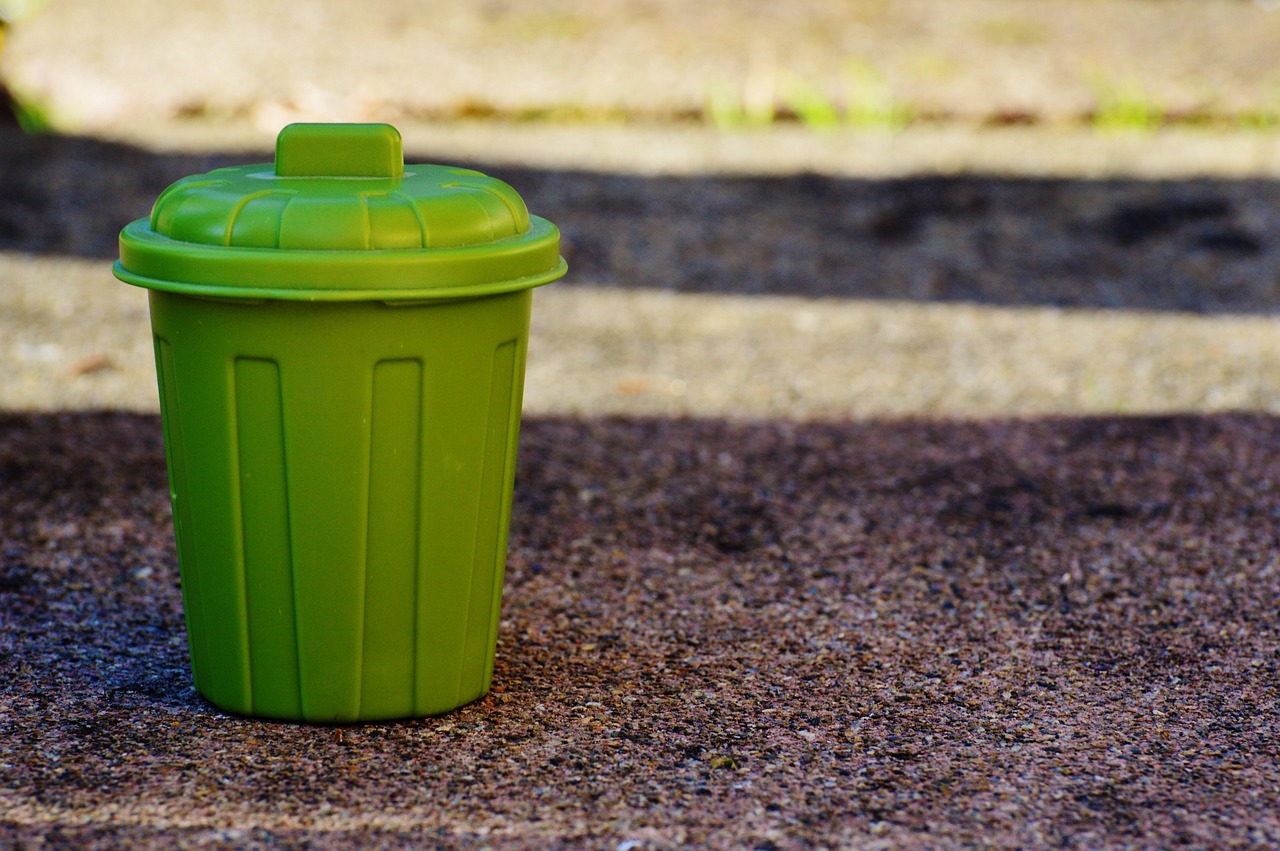
Educational Programs on Waste Art
Educational programs centered around waste art are not just about creating beautiful pieces; they serve as a vital bridge between creativity and environmental consciousness. These programs often engage participants of all ages, from children to adults, encouraging them to see the potential in what would typically be discarded. Imagine walking into a room filled with old newspapers, bottle caps, and fabric scraps, and instead of seeing trash, you begin to envision a vibrant mural or a stunning sculpture. This shift in perspective is precisely what these programs aim to achieve.
Through hands-on activities, participants learn about the principles of sustainability while simultaneously honing their artistic skills. For instance, workshops might focus on:
- Recycling techniques that turn everyday waste into art
- Understanding the environmental impact of waste
- Exploring various mediums, including plastic, metal, and textiles
Moreover, these programs often incorporate discussions about consumer habits and the importance of reducing waste. Participants are encouraged to reflect on their own consumption patterns and consider how they can make more sustainable choices in their daily lives. By fostering this awareness, educational programs not only nurture creativity but also cultivate a sense of responsibility towards the environment.
Many of these initiatives are conducted in collaboration with local schools, community centers, and environmental organizations. This collaboration helps to create a supportive network that amplifies the impact of waste art education. For example, a local school might host a workshop where students create art from recycled materials, followed by an exhibition showcasing their work. This not only highlights the students' creativity but also serves as a powerful reminder to the community about the importance of sustainability.
In addition to hands-on workshops, many programs also include lectures and discussions led by artists who specialize in waste art. These artists share their journeys, the challenges they face, and the triumphs of creating art from waste. Hearing these stories inspires participants and demonstrates that art can be a powerful tool for change.
Ultimately, educational programs on waste art play a crucial role in shaping a more sustainable future. They empower individuals to think critically about waste, inspire creativity, and foster a community spirit focused on environmental stewardship. By transforming waste into art, participants not only create beautiful pieces but also contribute to a larger movement aimed at reducing waste and promoting sustainability.
Q: What age groups can participate in educational programs on waste art?
A: Most programs are designed for a wide range of age groups, from children to adults, making it accessible for everyone interested in learning about sustainability and creativity.
Q: Do I need any prior art experience to join these programs?
A: No prior art experience is necessary! These programs are designed to be inclusive and encourage creativity at all skill levels.
Q: How can I find a waste art program near me?
A: You can check local community centers, schools, or environmental organizations for upcoming workshops and programs focused on waste art.
Q: What types of materials are typically used in waste art?
A: Common materials include plastic, paper, metal, and textiles. Participants are often encouraged to bring their own materials to repurpose.
Q: Are there any costs associated with participating in these programs?
A: Some programs may have a small fee to cover materials, while others may be free. It's best to check with the specific program for details.
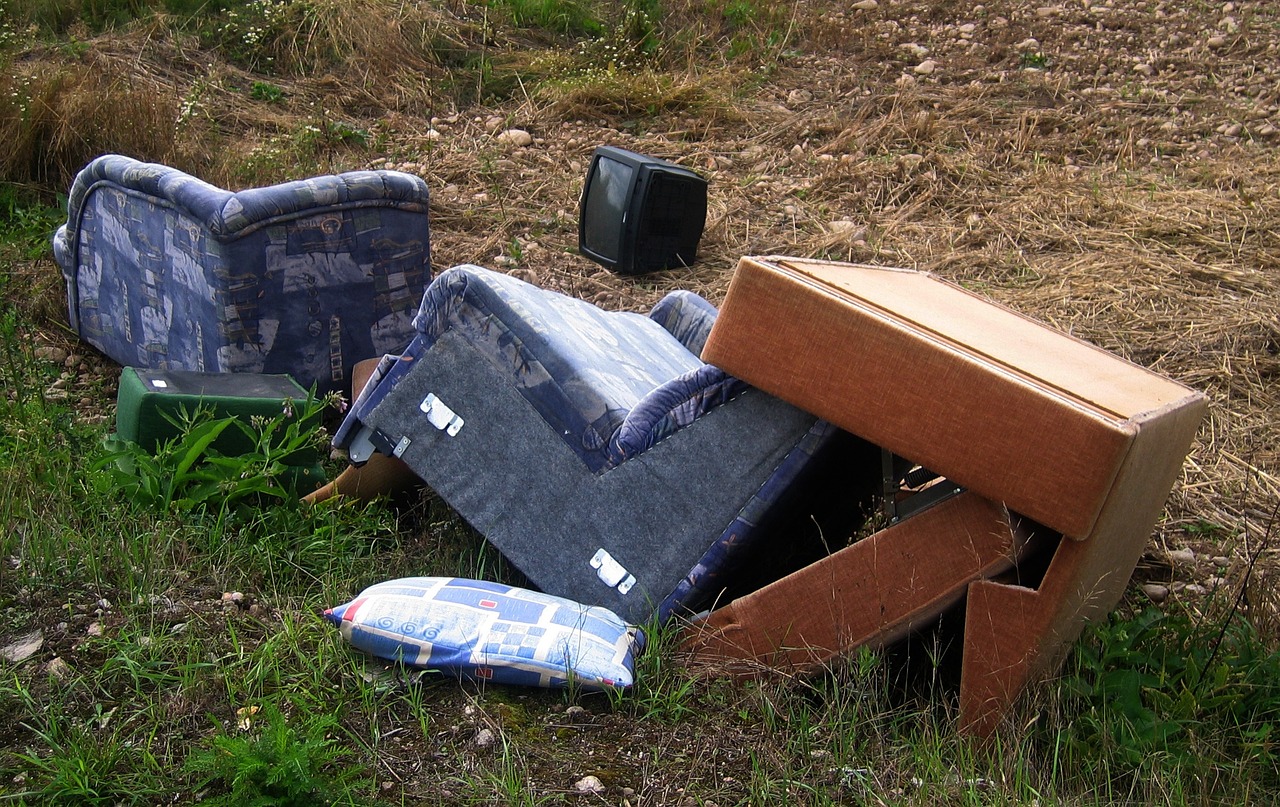
Impact on Local Communities
The impact of community-based waste art projects extends far beyond the mere act of creating art; it resonates deeply within local communities, fostering a sense of unity and shared responsibility. When residents come together to transform discarded materials into beautiful expressions of creativity, they not only beautify their surroundings but also cultivate a strong bond with one another. This collaborative spirit is essential, as it encourages individuals to engage with their environment actively.
Moreover, these projects often serve as a catalyst for change, inspiring residents to rethink their relationship with waste and consumption. As people witness the transformation of trash into art, they begin to understand the potential of what was once considered useless. This shift in perception can lead to more sustainable practices within the community, such as increased recycling efforts and reduced waste generation.
In many cases, community art initiatives also provide educational opportunities. Workshops and events centered around waste art teach participants about sustainability, creativity, and the importance of environmental stewardship. These programs empower individuals, especially the youth, to become advocates for change, spreading awareness about waste management and the importance of recycling in their everyday lives.
Furthermore, the visual impact of waste art installations can turn neglected spaces into vibrant areas that attract visitors and foster local pride. Public art made from recycled materials can transform dull streetscapes into lively, engaging environments. This beautification not only enhances the aesthetic appeal of neighborhoods but can also lead to increased foot traffic, benefiting local businesses. For instance, areas that embrace waste art often see a rise in tourism, as people are drawn to unique installations and community events.
| Benefits of Community Waste Art Projects | Impact on Local Communities |
|---|---|
| Environmental Awareness | Encourages sustainable practices and reduces waste generation. |
| Community Engagement | Fosters collaboration and strengthens community bonds. |
| Educational Opportunities | Teaches sustainability and creativity to participants. |
| Economic Benefits | Increases local tourism and supports small businesses. |
In essence, the impact of waste art on local communities is profound and multifaceted. It not only beautifies spaces but also educates, inspires, and unites people in a shared mission of sustainability. As these projects continue to grow, they will undoubtedly play a pivotal role in shaping a more environmentally conscious society.
- What is waste art? Waste art is the practice of creating art using discarded or recycled materials, transforming them into meaningful artistic expressions.
- How can I get involved in waste art projects in my community? Look for local art groups or community centers that host workshops or initiatives focused on upcycling and waste art.
- What materials are commonly used in waste art? Artists often use materials such as plastic, metal, paper, and textiles to create their pieces.
- Can waste art really make a difference? Absolutely! Waste art raises awareness about environmental issues, encourages recycling, and fosters community engagement.
Frequently Asked Questions
- What is waste art?
Waste art is a creative form of expression where artists use discarded materials, such as plastic, metal, paper, and textiles, to create unique pieces of art. This practice not only showcases the artist's creativity but also raises awareness about environmental issues and the importance of recycling.
- How does upcycling benefit the environment?
Upcycling helps reduce waste by transforming items that would otherwise end up in landfills into valuable art. This process conserves resources and promotes sustainability, encouraging people to rethink their consumption habits and consider the environmental impact of their choices.
- What types of materials are commonly used in waste art?
Artists often use a variety of waste materials, including plastics, metals, paper, and textiles. Each material has its own properties and potential, allowing artists to create diverse and thought-provoking pieces that challenge societal norms regarding waste and consumerism.
- Can you give examples of famous artists who work with plastic waste?
Yes! Notable artists such as Chris Jordan and Aurora Robson have gained recognition for their impactful works created from plastic waste. Their art serves as powerful statements on environmental degradation and the urgent need for recycling and sustainability.
- What innovative techniques do artists use to manipulate plastic waste?
Artists employ various techniques such as melting, weaving, and molding to creatively transform plastic waste into art. These methods not only enhance the visual appeal of the artwork but also demonstrate the versatility of materials that are often deemed useless.
- How do community art projects contribute to environmental awareness?
Community art projects centered around waste materials foster collaboration and inspire local participation. By engaging individuals in creative activities, these initiatives promote sustainability and encourage participants to take responsibility for their waste and environmental impact.
- What role do educational programs play in waste art?
Educational programs that focus on waste art teach participants about sustainability and the creative potential of discarded materials. Through hands-on activities, individuals learn valuable lessons about recycling and the importance of caring for our environment while expressing their creativity.
- How can waste art impact local communities?
Waste art projects can significantly enhance local environments by beautifying public spaces and instilling a sense of pride among residents. These initiatives encourage community members to be more responsible about waste management and actively participate in environmental stewardship.



















